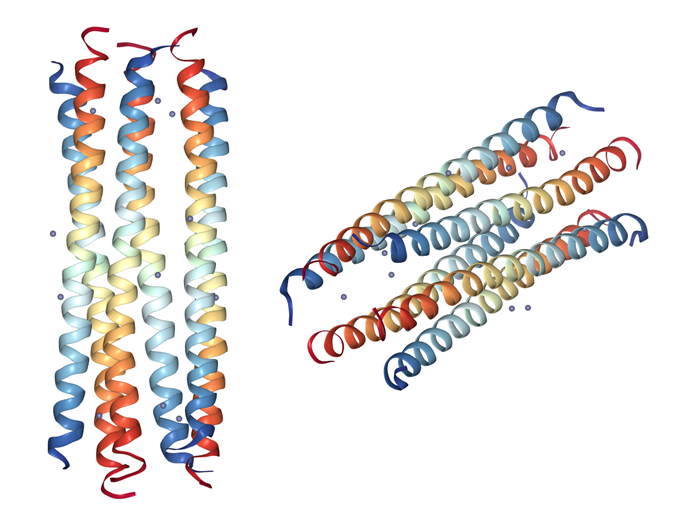Dermcidin-1L (human) . TFA
| Code | Size | Price |
|---|
| AG-CP3-0039-M001 | 1 mg | £170.00 |
Quantity:
| AG-CP3-0039-M005 | 5 mg | £490.00 |
Quantity:
Prices exclude any Taxes / VAT
Overview
Regulatory Status: RUO
Shipping:
Ambient
Storage:
-20°C
Images
Documents
Further Information
Appearance:
Solid lyophilized powder.
CAS:
478898-18-9
EClass:
32160000
Form (Short):
solid
Handling Advice:
Keep cool and dry.
InChi:
InChI=1S/C210H359N57O71.C2HF3O2/c1-98(2)69-129(236-150(275)86-220-147(272)85-226-203(330)164(106(17)18)261-173(300)115(33)231-181(308)123(53-39-46-66-215)240-184(311)124(54-40-47-67-216)238-171(298)113(31)229-149(274)88-223-180(307)137(78-158(286)287)249-190(317)131(71-100(5)6)237-154(279)91-222-177(304)120(50-36-43-63-212)239-186(313)126(56-59-155(280)281)241-191(318)132(72-101(7)8)246-193(320)134(74-103(11)12)248-200(327)144(94-269)258-175(302)118(218)93-268)178(305)224-89-151(276)234-121(51-37-44-64-213)182(309)245-130(70-99(3)4)179(306)225-90-152(277)235-122(52-38-45-65-214)183(310)250-138(79-159(288)289)189(316)232-116(34)174(301)263-166(108(21)22)205(332)244-128(58-61-157(284)285)187(314)251-139(80-160(290)291)196(323)247-133(73-102(9)10)192(319)242-127(57-60-156(282)283)188(315)259-145(95-270)201(328)264-165(107(19)20)204(331)227-92-153(278)233-119(49-35-42-62-211)176(303)221-87-148(273)230-114(32)172(299)262-167(109(23)24)207(334)256-136(77-117-84-219-97-228-117)195(322)254-142(83-163(296)297)199(326)265-168(110(25)26)206(333)243-125(55-41-48-68-217)185(312)252-141(82-162(294)295)198(325)266-169(111(27)28)208(335)255-135(75-104(13)14)194(321)253-140(81-161(292)293)197(324)260-146(96-271)202(329)267-170(112(29)30)209(336)257-143(210(337)338)76-105(15)16;3-2(4,5)1(6)7/h84,97-116,118-146,164-170,268-271H,35-83,85-96,211-218H2,1-34H3,(H,219,228)(H,220,272)(H,221,303)(H,222,304)(H,223,307)(H,224,305)(H,225,306)(H,226,330)(H,227,331)(H,229,274)(H,230,273)(H,231,308)(H,232,316)(H,233,278)(H,234,276)(H,235,277)(H,236,275)(H,237,279)(H,238,298)(H,239,313)(H,240,311)(H,241,318)(H,242,319)(H,243,333)(H,244,332)(H,245,309)(H,246,320)(H,247,323)(H,248,327)(H,249,317)(H,250,310)(H,251,314)(H,252,312)(H,253,321)(H,254,322)(H,255,335)(H,256,334)(H,257,336)(H,258,302)(H,259,315)(H,260,324)(H,261,300)(H,262,299)(H,263,301)(H,264,328)(H,265,326)(H,266,325)(H,267,329)(H,280,281)(H,282,283)(H,284,285)(H,286,287)(H,288,289)(H,290,291)(H,292,293)(H,294,295)(H,296,297)(H,337,338);(H,6,7)/t113-,114-,115-,116-,118-,119-,120-,121-,122-,123-,124-,125-,126-,127-,128-,129-,130-,131-,132-,133-,134-,135-,136-,137-,138-,139-,140-,141-,142-,143-,144-,145-,146-,164-,165-,166-,167-,168-,169-,170-;/m0./s1
InChiKey:
DBFODOQWDMTJRA-KPEYATPJSA-N
Long Description:
Chemical. CAS: 478898-18-9. Formula: C210H359N57O71 . C2HF3O2. MW: 4818.5 . 114.0. Dermcidin is an antimicrobial peptide constitutively expressed in sweat glands, secreted into the sweat and transported to the epidermal surface. In sweat it is proteolytically processed to Dermcidin-1L (DCD-1L) that has antimicrobial activity against a variety of pathogenic microorganisms and other peptides (e.g. DCD-1, Y-P30). Dermcidin-1L (DCD-1L) is a 48-amino acid antimicrobial peptide (AMP) with a Leu residue on the C-terminus, secreted in sweat and part of the innate host defense of the immune system. Unlike most AMPs, which are cationic, DCD-1L has a net negative charge. DCD-1L displays antimicrobial activity thereby limiting skin infection by potential pathogens in the first few hours after bacterial colonization. Highly effective against E.coli, E.faecalis, S.aureus and C.albicans. DCD-1L is first monomeric in human sweat. DCD-1L interaction with negatively charged bacterial membrane phospholipids leads to Zn(2+) dependent formation of oligomeric DCD-1L complexes in the bacterial membrane, which subsequently leads to ion channel formation resulting in membrane depolarization and bacterial cell death. The gene products of DCD have been reported to be a neuronal survival factor, a putative oncogene in breast cancer and a proteolysis-inducing factor (PIF) that induces skeletal muscle proteolysis to cause cancer cachexia.
Molecular Formula:
C210H359N57O71 . C2HF3O2
Molecular Weight:
4818.5 . 114.0
Package Type:
Vial
Product Description:
Dermcidin is an antimicrobial peptide constitutively expressed in sweat glands, secreted into the sweat and transported to the epidermal surface. In sweat it is proteolytically processed to Dermcidin-1L (DCD-1L) that has antimicrobial activity against a variety of pathogenic microorganisms and other peptides (e.g. DCD-1, Y-P30). Dermcidin-1L (DCD-1L) is a 48-amino acid antimicrobial peptide (AMP) with a Leu residue on the C-terminus, secreted in sweat and part of the innate host defense of the immune system. Unlike most AMPs, which are cationic, DCD-1L has a net negative charge. DCD-1L displays antimicrobial activity thereby limiting skin infection by potential pathogens in the first few hours after bacterial colonization. Highly effective against E.coli, E.faecalis, S.aureus and C.albicans. DCD-1L is first monomeric in human sweat. DCD-1L interaction with negatively charged bacterial membrane phospholipids leads to Zn(2+) dependent formation of oligomeric DCD-1L complexes in the bacterial membrane, which subsequently leads to ion channel formation resulting in membrane depolarization and bacterial cell death. The gene products of DCD have been reported to be a neuronal survival factor, a putative oncogene in breast cancer and a proteolysis-inducing factor (PIF) that induces skeletal muscle proteolysis to cause cancer cachexia.
Purity:
?95%
SMILES:
N[C@@H](CO)C(N[C@@H](CO)C(N[C@@H](CC(C)C)C(N[C@@H](CC(C)C)C(N[C@@H](CCC(O)=O)C(N[C@@H](CCCCN)C(NCC(N[C@@H](CC(C)C)C(N[C@H](C(NCC(N[C@H](C(N[C@@H](CCCCN)C(N[C@@H](CCCCN)C(N[C@H](C(N[C@@H](C(C)C)C(NCC(NCC(N[C@@H](CC(C)C)C(NCC(N[C@@H](CCCCN)C(N[C@@H](CC(C)C)C(NCC(N[C@@H](CCCCN)C(N[C@H](C(N[C@H](C(N[C@@H](C(C)C)C(N[C@@H](CCC(O)=O)C(N[C@H](C(N[C@@H](CC(C)C)C(N[C@@H](CCC(O)=O)C(N[C@@H](CO)C(N[C@@H](C(C)C)C(NCC(N[C@@H](CCCCN)C(NCC(N[C@H](C(N[C@@H](C(C)C)C(N[C@H](C(N[C@H](C(N[C@@H](C(C)C)C(N[C@@H](CCCCN)C(N[C@H](C(N[C@@H](C(C)C)C(N[C@@H](CC(C)C)C(N[C@H](C(N[C@@H](CO)C(N[C@@H](C(C)C)C(N[C@@H](CC(C)C)C(O)=O)=O)=O)=O)CC(O)=O)=O)=O)=O)CC(O)=O)=O)=O)=O)CC(O)=O)=O)CC1=CN=CN1)=O)=O)C)=O)=O)=O)=O)=O)=O)=O)=O)CC(O)=O)=O)=O)=O)C)=O)CC(O)=O)=O)=O)=O)=O)=O)=O)=O)=O)=O)=O)C)=O)=O)=O)C)=O)=O)CC(O)=O)=O)=O)=O)=O)=O)=O)=O)=O.FC(F)(C(O)=O)F
Solubility Chemicals:
Soluble in water (1mg/ml).
Transportation:
Non-hazardous
UNSPSC Category:
Biochemical Reagents
UNSPSC Number:
12352200
Use & Stability:
Stable for at least 1 year after receipt when stored at -20°C.
References
Dermcidin: a novel human antibiotic peptide secreted by sweat glands: B. Schittek, et al.; Nat. Immunol. 2, 1133 (2001) | Dermcidin is constitutively produced by eccrine sweat glands and is not induced in epidermal cells under inflammatory skin conditions: S. Rieg, et al.; Br. J. Dermatol. 151, 534 (2004) | Functional and structural characterization of recombinant dermcidin-1L, a human antimicrobial peptide: Y.P. Lai, et al.; BBRC 328, 243 (2005) | Antimicrobial peptides: effectors of innate immunity in the skin: O. Barak, et al.; Adv. Dermatol. 21, 357 (2005) (Review) | Naturally processed dermcidin-derived peptides do not permeabilize bacterial membranes and kill microorganisms irrespective of their charge: H. Steffen, et al.; Antimicrob. Agents Chemother. 50, 2608 (2006) | Identification of dermcidin in human gestational tissue and characterization of its proteolytic activity: J.P. Lee Motoyama, et al.; BBRC 357, 828 (2007) | The dermcidin gene in cancer: role in cachexia, carcinogenesis and tumour cell survival: G.D. Stewart, et al.; Curr. Opin. Clin. Nutr. Metab. Care 11, 208 (2008) (Review) | The multiple facets of dermcidin in cell survival and host defense: B. Schittek; J. Innate Immun. 4, 349 (2012) (Review) | Seriniquinone, a selective anticancer agent, induces cell death by autophagocytosis, targeting the cancer-protective protein dermcidin: L. Trzoss, et al.; PNAS 111, 14687 (2014) | The secrets of dermcidin action: M. Burian & B. Schittek; Int. J. Med. Microbiol. 305, 283 (2015) (Review)



